A Hispanic cross between vaudeville and a travelling circus, carpas were tent theatres which grew in popularity during the hard times of the 1920s and 30s in Mexico and southwest America. The governments liked it as it was a good way to keep the poor out of bars and brothels, and the people liked it for the Depression beating comedy and political satire, and the performers’ music and dance routines and acrobatics.
Artist Hugo Crosthwaite has delved into the rich history of the genre to create his Carpas installation at the Orange County Museum of Art, as part of this year’s California-Pacific Triennial. His work consists of a wall mural and three canvas banners showing the mainstay carpas characters: La Narizona (big-nosed and corrupt policeman), Miss Bala (virtuous damsel in distress) and El Pelado (down-at-heel everyman). Crosthwaite, from Tijuana, has updated the traditional scenes to reflect some more modern goings-on, such as gang-banging drug dealers and immigration dodgers. The installation, presented by Luis De Jesus Los Angeles, will remain in situ until the end of the Triennial on 17th November.
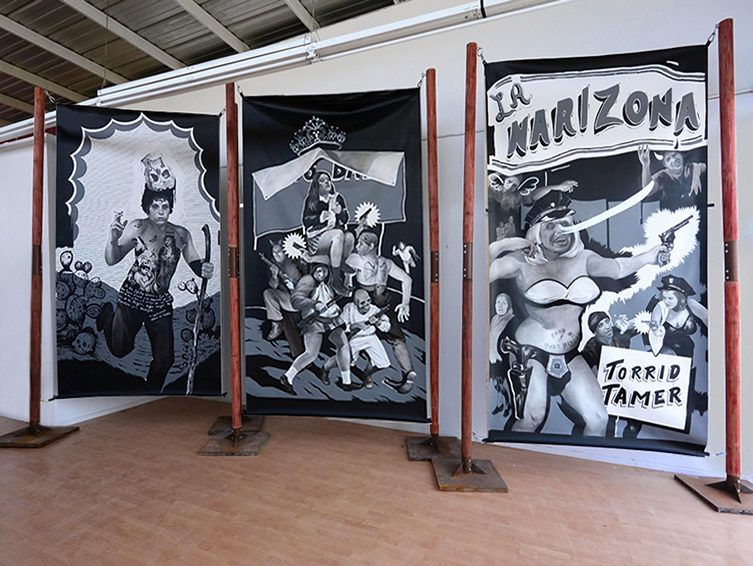
Hugo Crosthwaite, CARPAS,
studio installation view, 2013
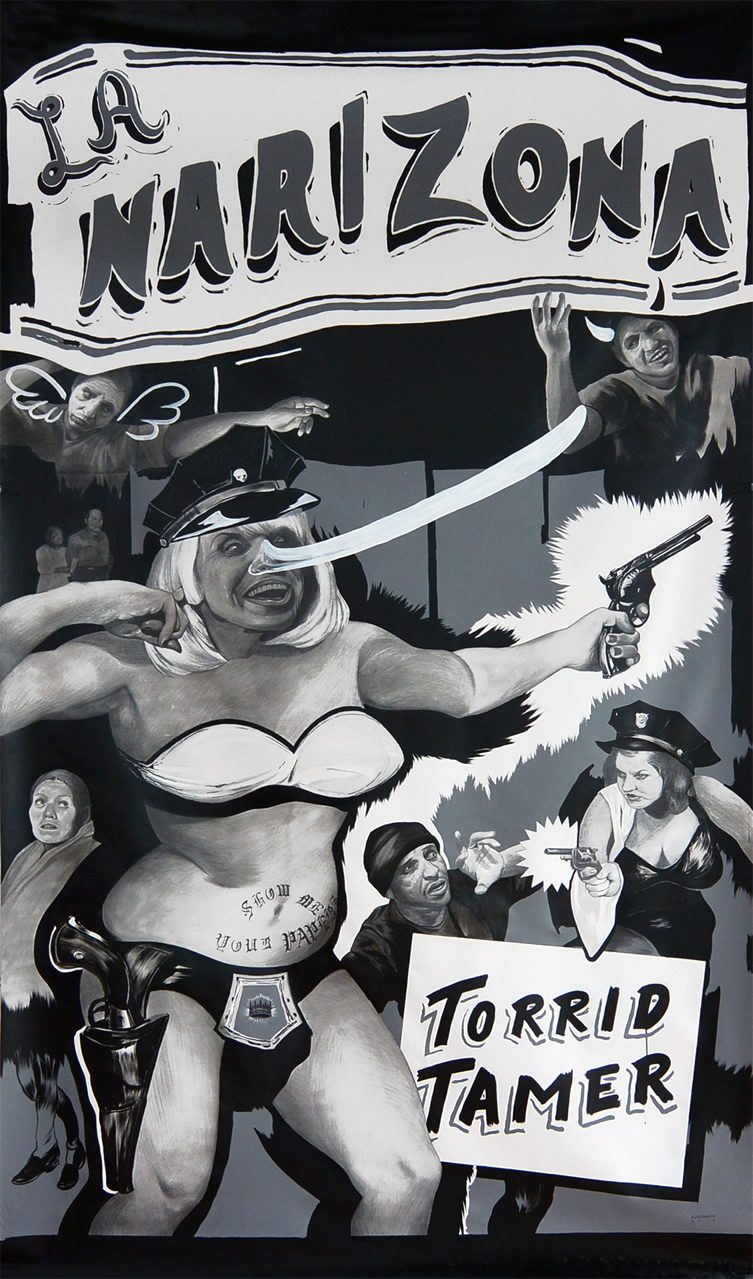
La Narizona,
acrylic, ink, gaphite, canvas,
12 x 8 ft
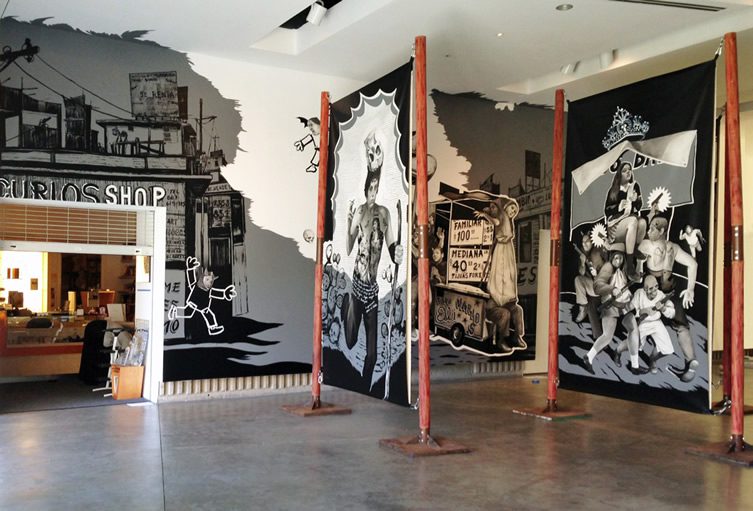
Hugo Crosthwaite, CARPAS,
studio installation view, 2013
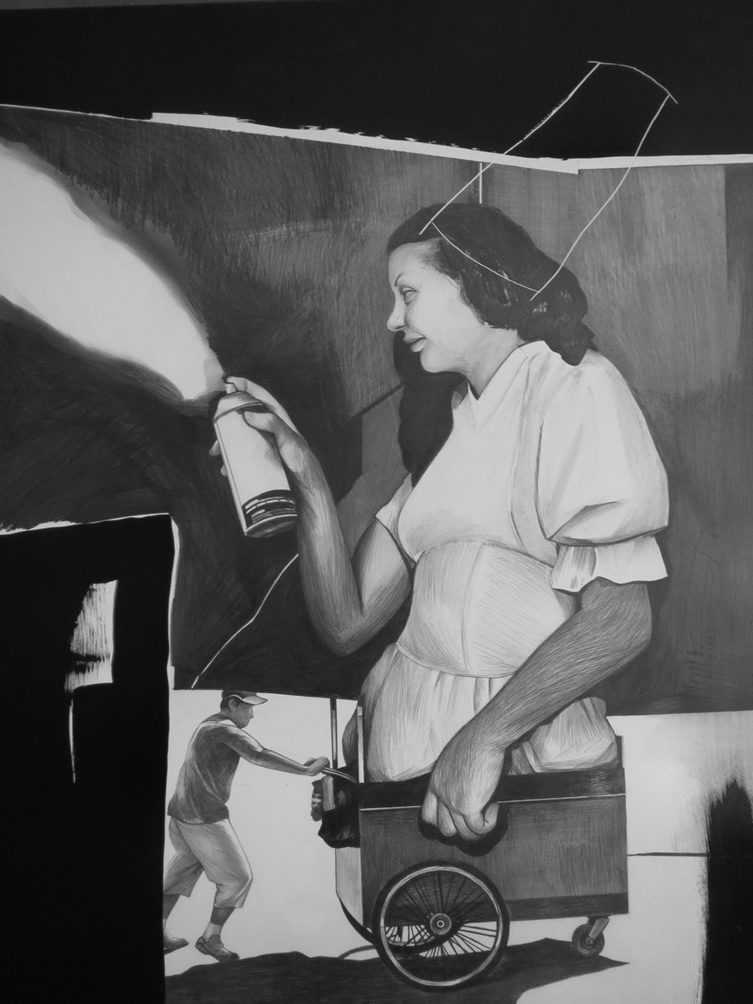
Fire Cart, 2012,
16 x 20 in, drawing, pencil,
black acrylic on clayboard
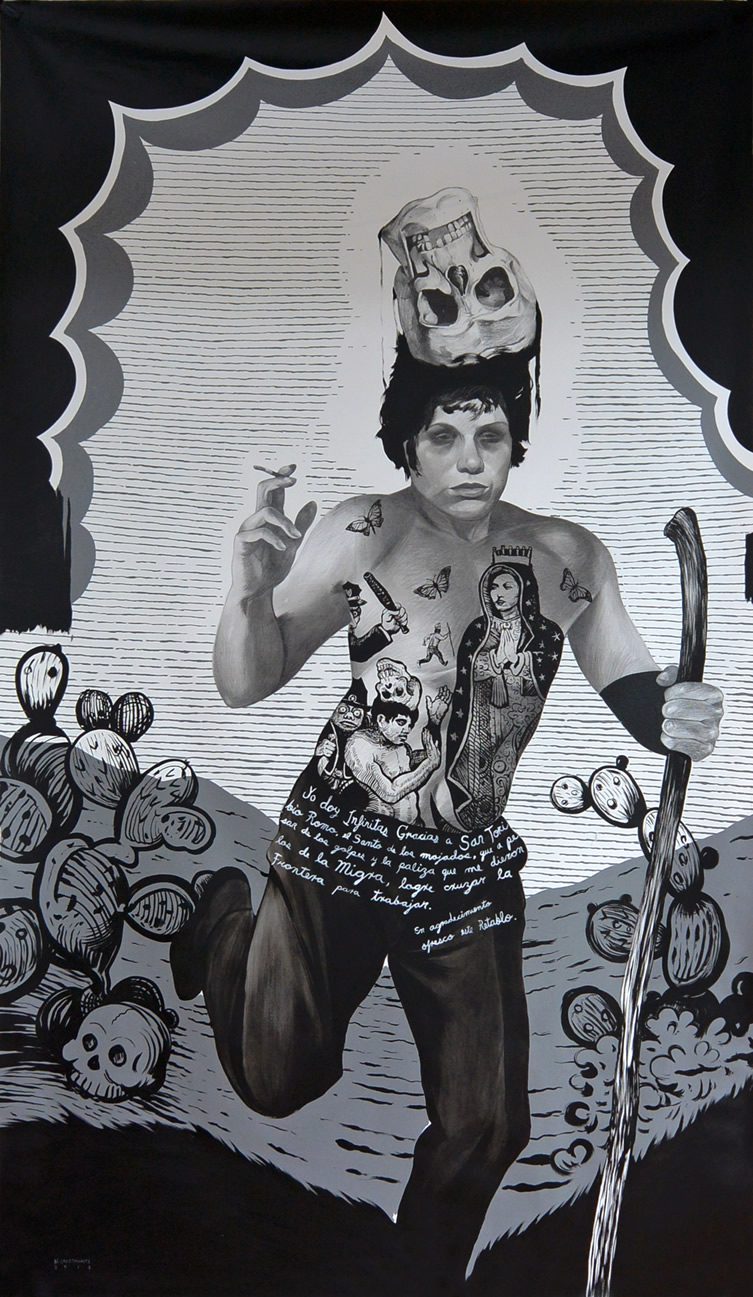
El Pelado,
acrylic, ink, gaphite, canvas,
12 x 8 ft
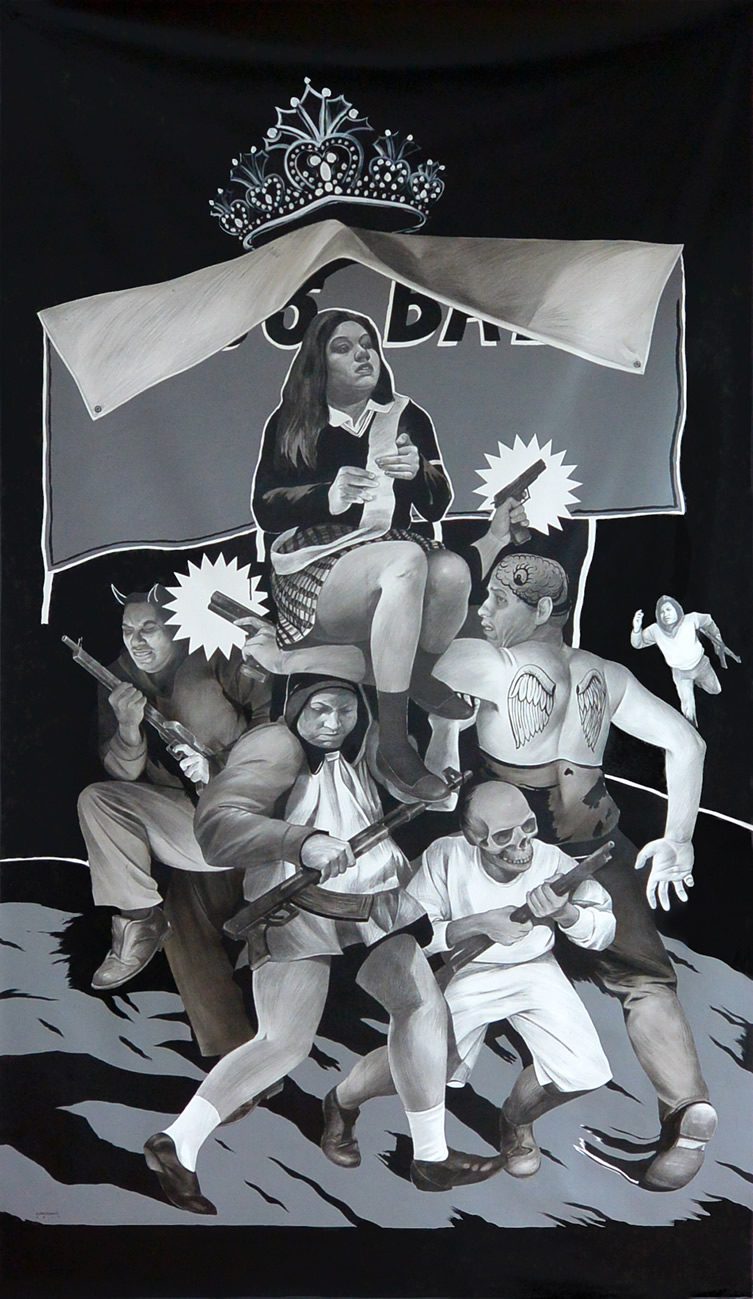
Miss Bala,
acrylic, ink, gaphite, canvas,
12 x 8 ft
All images courtesy of the artist
and Luis De Jesus Los Angeles





